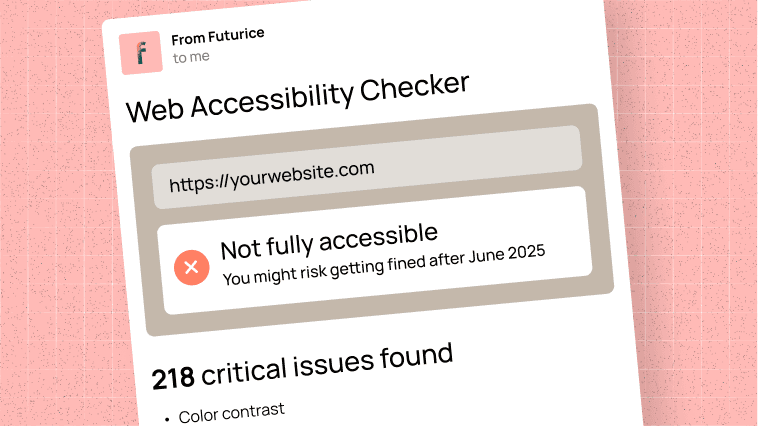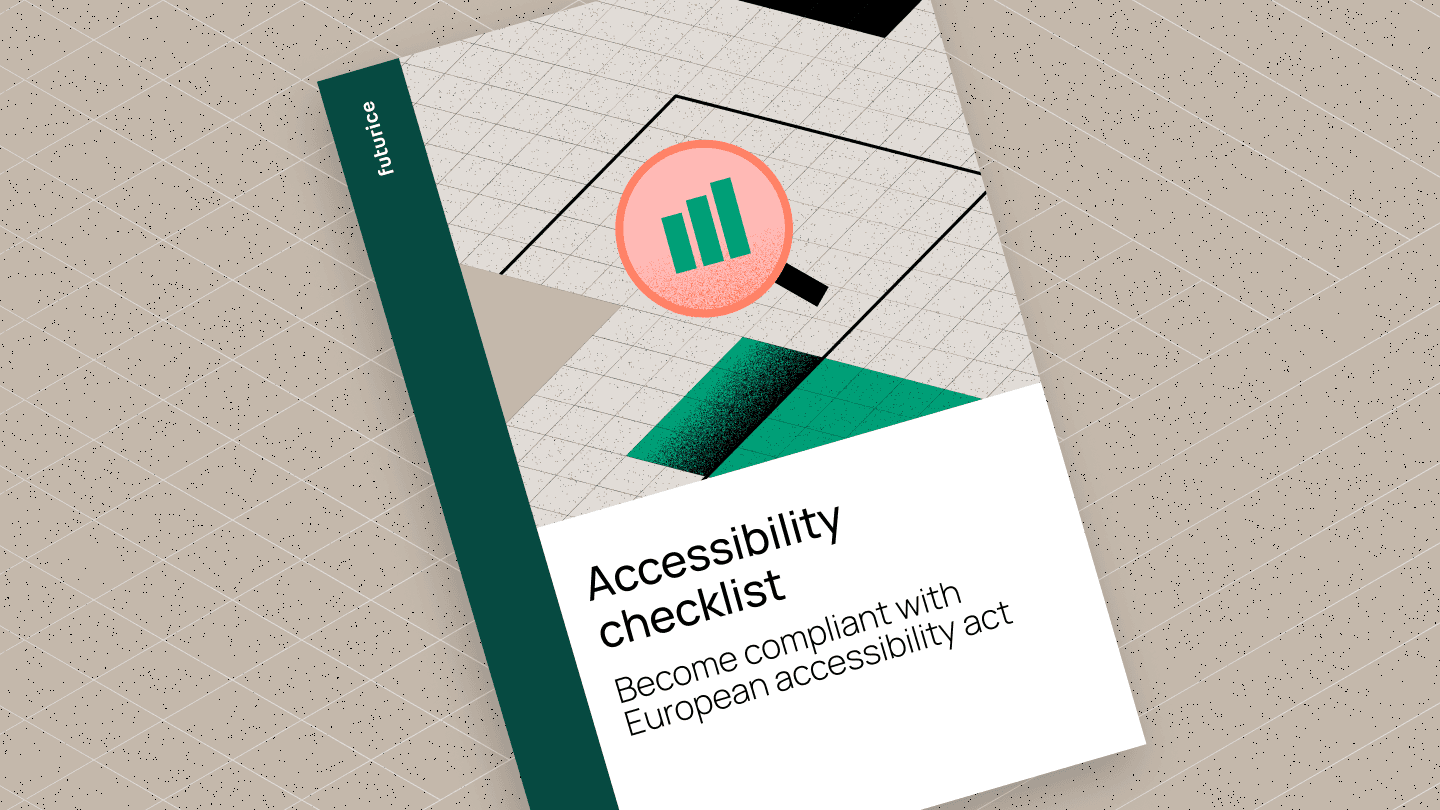Integrating accessibility into your ways of working in three steps
The European Union’s European Accessibility Act (EAA), requires companies in the region to adapt their digital products and services to accessibility standards. An accessibility audit and correcting any issues is a good place to start, but to remain compliant, everyone contributing to the digital environment needs to adopt accessibility practices. Let’s look at creating an accessibility strategy tailored to your organization's unique needs and integrating accessibility into your ways of working.

Create an accessibility strategy
Your accessibility strategy should be built upon your existing conditions and will be unique to your organization. We work with three areas that can help you succeed: Accessibility goals, knowledge, and ways of working. By adopting these areas into your strategy, you meet legal requirements and open doors to a broader audience of users who value and appreciate inclusive digital experiences.
Let's start crafting a strategy that goes beyond an audit and ensures your commitment to fair access to digital products and services while driving innovation and enhancing your business environment.
Compliance goals will steer your strategy
A good accessibility goal ties into your existing goals, values, and strategies. For instance, at Futurice, our mission is to empower the world to act, and one of our core values is care. Futurice's accessibility goal is to empower the world by making digital products and services accessible to everyone, regardless of their abilities. We are committed to creating an inclusive digital environment where individuals with disabilities can fully participate. We aim to exceed compliance with accessibility guidelines and regulations, actively seeking innovative solutions that enhance user experiences and eliminate barriers to digital access.
Start from your current level and set a realistic goal that your organization can buy into. If you're working through a backlog of tasks to meet compliance requirements, consider setting a clear goal for when you can accomplish them. Alternatively, if you've already brought all your current digital services and products into compliance, aim to enhance the overall experience for all individuals, including those with disabilities. This proactive approach ensures that everyone can enjoy the best possible experience with your services and extends your market reach.
Different layers of knowledge
Creating digital products that are accessible requires knowledge about accessibility at various levels. "Not everyone has to be an expert, but everyone should be aware" is a good way to put it. It describes the range of competence needed in digital accessibility – from understanding the basic principles to being an expert in best practices and legal requirements.
Basics
Everyone at your company, from architects and product owners to management teams and administrators, should at least grasp the basics of digital accessibility and its importance. A product owner who understands the basic principles of digital accessibility will recognize the need to prioritize them in the backlog, just as a top manager will allocate the necessary resources for the organization to work on accessibility.
Practicing
Everyone involved in creating a product – including design, code, and content contributors – needs practical knowledge of how to make their contributions accessible. Being familiar with accessibility practices in their domains ensures the product is more accessible to begin with and helps avoid fixing issues as an afterthought.
Evaluating
Even if all individual roles within the development team know how to contribute to accessibility, there should be a person in each team who can test the entire product before it is launched. This role requires overarching expertise in testing the product against accessibility criteria in design, code, and content. The knowledge should focus more on testing against criteria and detecting issues rather than how to best fix issues within each field.
Expert
One or more individuals within your organization must have extensive knowledge of legal requirements and the application of accessibility standards such as Web Content Accessibility Guidelines (WCAG). They should be able to serve as advisors to development teams and management and understand how adopting accessibility affects your product now and in the future on a more strategic level.
It's important to adjust the number of experts, evaluators, and practitioners depending on the size of the organization and the need for support from these roles your different teams need.
Integrating accessibility into your ways of working
Establishing practices, tools, and rituals that work for the different teams and technologies you rely on. A good start could be to split the responsibility of accessibility between the different roles and create guidelines based on good accessibility practices. Ensure your team understands and follows the guidelines by implementing checkpoints in your team's weekly rituals. There are many good tools on the market today; identify which ones you could benefit from and integrate them into your work.
Identify how you can continuously test the accessibility of your products and services. Regular tests and measurements of your accessibility compliance are essential to assess progress, address issues promptly, and prioritize efforts effectively. Don't wait until the end to test accessibility; it's more efficient and costs less to catch and fix problems as they arise.
Define the steps and milestones of your accessibility journey to ensure long-term success and shared governance of the topic. Change requires clear goals, effective communication, and leadership support. Assess the need for change, develop a strategic plan, involve your employees, address issues, and implement changes gradually.
On average, 20% of all European citizens have disabilities, and all of us – including you – will experience some form of disability, such as vision or hearing impairment, during our lifetime. By incorporating accessibility into your company's DNA, you’re ensuring you comply with legal requirements and tap into a growing market of users who value and appreciate inclusive experiences. Accessibility should not just be something you check off; it's a commitment to allowing fair access to products and services that drives innovation and promotes a stronger business environment.
If you have any questions or need help setting up your digital accessibility strategy, reach out! juho.karhu@futurice.com
 Erica BergensandAlumnus (Product Manager), Futurice
Erica BergensandAlumnus (Product Manager), Futurice





